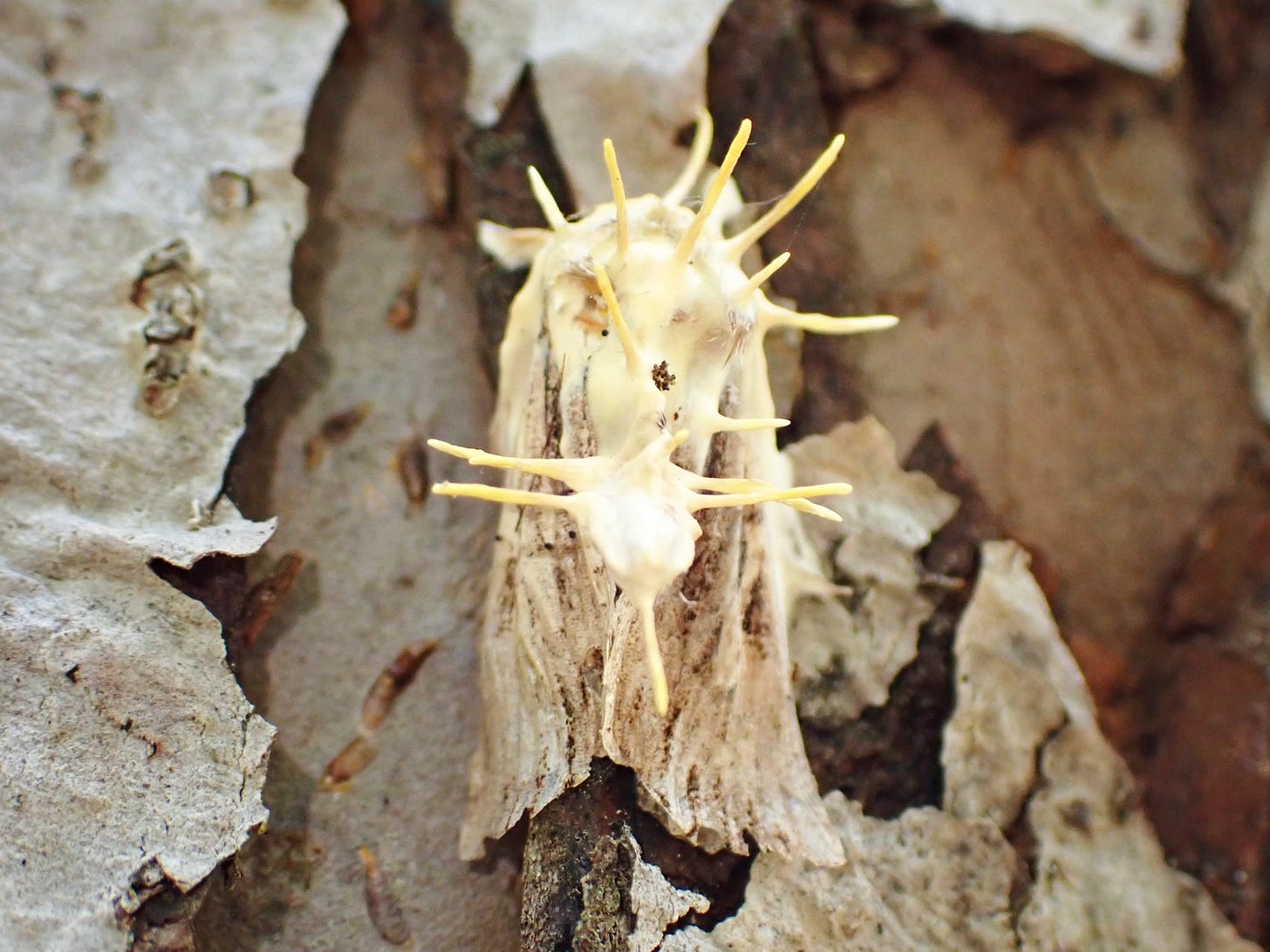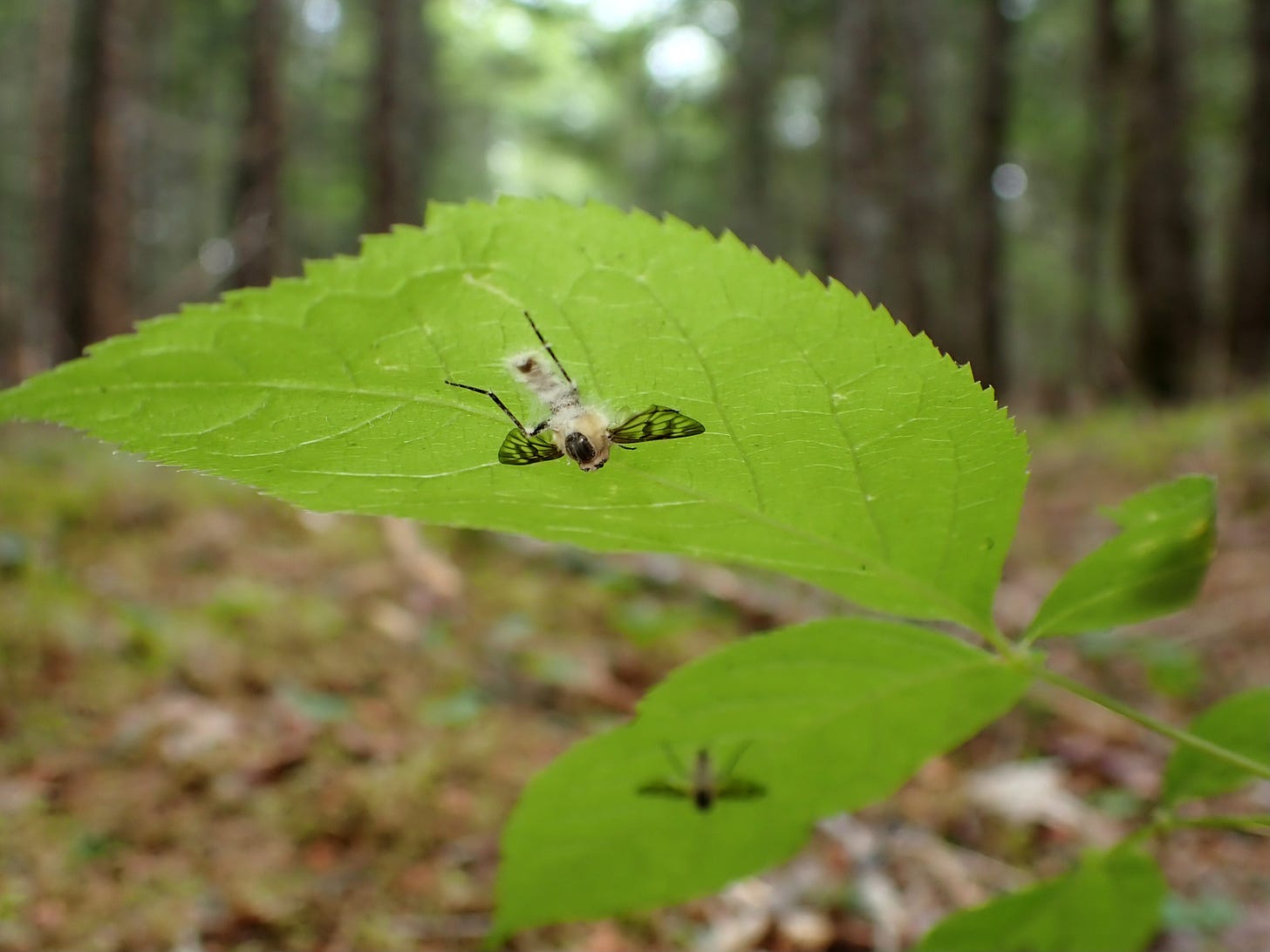Thanks for connecting here at Nature Moments, where we are making the world a better place, one nature connection at a time :) Be curious. Be amazed. And then do it again!
Thanks so much for your support! 💕
This is a spooky moment, a creepy moment, a moment full of all the ruthless conquest of a malevolent alien entity ravaging victims with evolutionary precision…
This poor moth was just out minding its own business, doing moth-y things, gracing an old apple orchard with the haphazard flutter of shimmery wings. In-and-out of dapples, dainty sips of nectar, short rests shrouded in perfect camouflage.
But the world is full of hidden dangers, lurking on the margins of intuition, brooding and seething and aching to colonize and overthrow and subjugate in an insatiable march of egomaniacal self-advancement…
🤣 Okay, so that’s vaguely true on some level, but also this is just a simple fungus making its way in the world!🤣
Cordyceps fungi are parasitic, outwardly bizarre, and just happen to effortlessly write their own sci-fi-horror! Cordyceps are perhaps best known as the vector for the zombie-apocalypse in HBO’s hit series The Last of Us, which sparked A LOT of articles discussing whether a Cordyceps pandemic could really, scientifically, spell humanity’s doom.
I’m not the only one who noticed! Check out this piece from
: “…with the recent popularity of The Last of Us series, I decided to revisit the piece and give it a fresh update by including additional finds from my time in Asia (and to dispel any mycophobia regarding a fungus-to-human zombie apocalypse!)”
In The Last of Us, Cordyceps-infected humans turned into (of course) zombies, driven by the fungus to bite their fellow man, thus spreading and colonizing. Infected humans cannibalized each other for nutrients, and also acted as nurse-logs from which all manner of stunning mushroom forms would sprout over time.
My least favorite part of the series was the overly-realistic depiction of humans gnawing on each other. But my favorite part was all of the creative variety of fungal forms sprouting from every surface - including surfaces that happened to be stumbling around on two legs!
In real life, Cordyceps fungi are actually just a remarkable example of a natural balance that is key to healthy ecosystems. I’m a bit of a fungi-fan, and even the creepy ones hold fascination and beauty!
Each Cordyceps species, while devastatingly fatal, is also elegantly restrained. Cordyceps only infect arthropods to begin with, and while there are hundreds of different species of Cordyceps, each one is limited to a very specific host (NIH on Cordyceps ). So the Cordyceps fungus that invaded this unfortunate moth would be completely harmless to a passing ant or spider or beetle.
This Cordyceps is “blooming” and will release spores to await a suitable host. But with these cute little moths being pretty sparsely distributed, the odds are rather in their favor!
When hosts are densely populated, Cordyceps can spread quite rapidly. But in a colony environment, zombie bugs are easy to spot. They get twitchy, confused, sluggish, disoriented. And when that starts to happen, the rest of the colony will typically respond by driving infected members away before the fungus has a chance to bloom.
And Cordyceps is not alone, actually, in this rather unusual but deeply effective lifestyle. Meet the Puppeteer Fungus, Entomophthora muscae.
At a certain time each year, the Puppeteer Fungus drives these certain flies to find these certain leaves, where they arrange themselves in this very certain position. A different certain fly, at a different certain time, will climb to the top of the flower stalks on my creeping thyme plants. Spooky.
The end result of this bizarre zombie-ballet is that each of these fascinating parasitic fungi is uniquely effective in preventing its host’s unchecked multiplication, while being inherently prevented from unchecked multiplication itself. A delicate balance. Simple and effective. Well done, nature! Not creepy, after all. Just sensible.
It does also happen to be extraordinarily eye-catching. It will stop you in your tracks, and provide a long moment of contemplation about all that is weird, wonderful, spooky, fascinating, creepy, and simply a highly effective mechanism for balance in this wide, wild world.









I love that nature includes it's own version of Halloween that it does on it's own schedule!
Brilliant - I adore the detail you exquisitely deliver. It delights me to follow your work here.